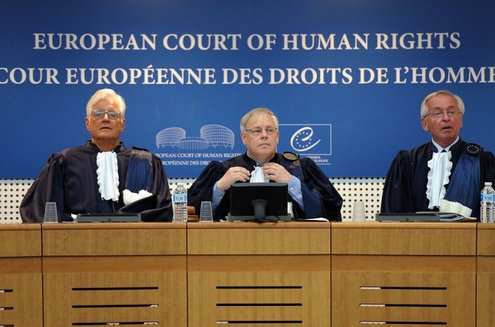On December 10, 1948, the United Nations General Assembly (UDHR) adopted the Universal Declaration of Human Rights. This strengthened the international human rights movement.¹ The Declaration, for the first time in history, spelled out the basic civil, political, economic, social, and cultural rights that all human beings should possess.¹ It is widely accepted as the fundamental norms of human rights. The UDHR, with the International Covenant on Civil and Political Rights and its two Optional Protocols, and the International Covenant on Economic, Social and Cultural Rights, form the International Bill of Human Rights.¹
International human rights law lays down obligations which States are bound to respect¹. By becoming parties to international treaties, States assume obligations and duties under international law to respect, to protect, and the fulfill human rights¹:
1. The obligation to respect means that States must refrain from interfering with or curtailing the enjoyment of human rights;
2. The obligation to protect requires States to protect individuals and groups against human rights abuses;
3. The obligation to fulfill means that States must take positive action to facilitate the enjoyment of basic human rights.
The human rights treaty bodies represent committees of independent experts that monitor implementation of the core international human rights treaties.² There are 10 human rights treaty bodies composed of independent experts of recognized competence in human rights. Each expert is nominated and elected for fixed renewable terms of 4 years by State parties²:
- Human Rights Committee: monitors implementation of the International Covenant on Economic, Social and Cultural Rights (1966);
- Committee on Economic, Social and Cultural Rights: monitors implementation of the International Covenant on Economic, Social and Cultural Rights (1966);
- Committee on the Elimination of Racial Discrimination: monitors implementation of the International Convention on the Elimination of All Forms of Racial Discrimination (1965);
- Committee on the Elimination of Racial Discrimination against Women: monitors implementation of the International Convention on the Elimination of All Forms of Discrimination against Women (1979);
- Committee against Torture: monitors implementation of the Convention against Torture and Other Cruel, Inhuman or Degrading Treatment (1984);
- Committee on the Rights of the Child: monitors implementation of the Convention on the Rights of the Child (1989);
- Committee on Migrant Workers: monitors implementation of the International Convention on the Protection of the Rights of All Migrant Workers and Members of Their Families (1990)
- Committee on the Rights of Persons with Disabilities: monitors implementation of the International Convention on the Rights of Persons with Disabilities (2006);
- Committee on Enforced Disappearances: monitors implementation of the International Convention for the Protection of All Persons from Enforced Disappearances (2006);
- The Subcommittee on Prevention of Torture and other Cruel, Inhuman or Degrading Treatment or Punishment: visits places of detention in order to prevent torture and other cruel, inhuman or degrading treatment or punishment.
This commitment to human rights has, over the years, been translated into law, in the forms of treaties, customary international law, general principles, regional agreements and domestic law. Through these laws, human rights are expressed and guaranteed.³ Through ratification of international human rights treaties, governments promise to put into place domestic measures and legislation compatible with their treaty obligations and duties.³
Image source:
References:
1. United Nations Human Rights. International Human Rights Law. Retrieved May 7, 2014, from http://www.ohchr.org/en/professionalinterest/pages/internationallaw.aspx
2. United Nations Human RIghts. Monitoring the core international human rights treaties. Retrieved May 7, 2014, from http://www.ohchr.org/EN/HRBodies/Pages/TreatyBodies.aspx
3. The Universal Declaration of Human Rights. The Foundation of International Human Rights Law. Retrieved May 7, 2014, from http://www.un.org/en/documents/udhr/hr_law.shtml
© BrainMass Inc. brainmass.com June 30, 2024, 9:21 am ad1c9bdddf